How to find commercial property owner phone numbers and contact information
A detailed guide on how to use Reonomy to find phone numbers and contact information for commercial property owners.

What is it that comes to mind when you think about the process and work that goes into finding property owner contact information? My best guess is that it’s not very positive.
While you might enjoy talking to assistants, receptionists, and clerks, your team’s time is best spent talking and marketing directly to decision-makers.
That begs two questions:
What’s the best way to find commercial property owner contact information?
Is there a scalable source that provides that information online?
Reonomy’s database of commercial property owners allows CRE professionals to digitally analyze and understand owning structures, the people behind LLCs, and the contact information of individuals—in any market, from any market.
How to find property owner contact information
When using the Reonomy you can either search for specific, known properties and find owner contact information, or you can discover new properties and opportunities from scratch, then find the owners just as easily. More sophisticated teams may take the backend approach.
If you’re looking to improve and scale your prospecting efforts, however, here’s a step-by-step, case-by-case look at how to do all of that within the Reonomy platform.
Find the property’s reported owner
To find the reported owner of a known property by address, you can simply enter the exact address of the desired property into the search bar at the top of the Reonomy platform.
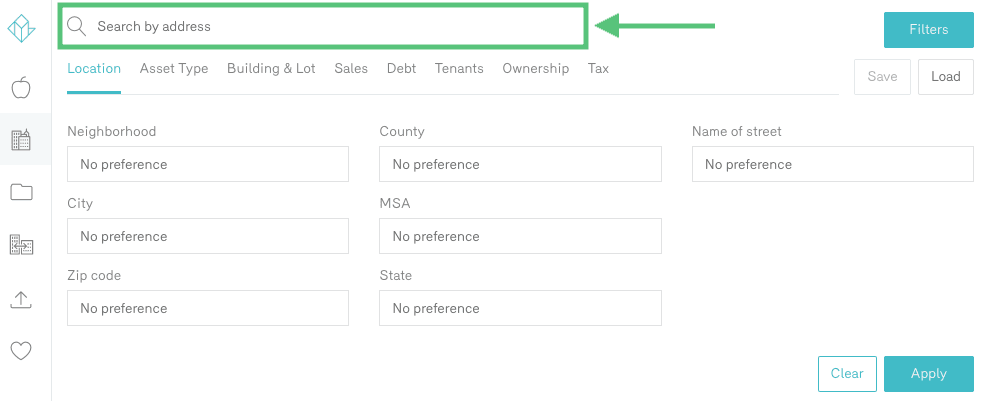
For example, say you enter, “2552 2nd Ave, San Diego, CA 92103.” As you’re typing, the address you are looking for will appear in the dropdown.
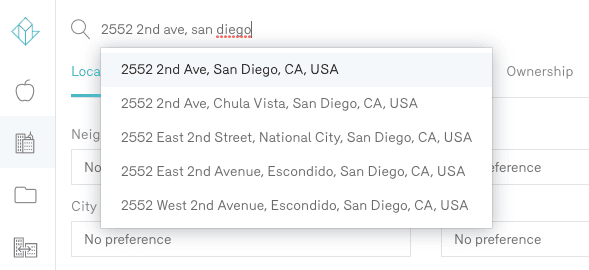
Once you click the address in the dropdown, you’ll be taken to the profile page of that property, where different research cards are broken out for different pieces of information on the asset. That includes tabs for Building & Lot, Ownership, Tenants, Sales, Debt, Tax, Notes, and Files.
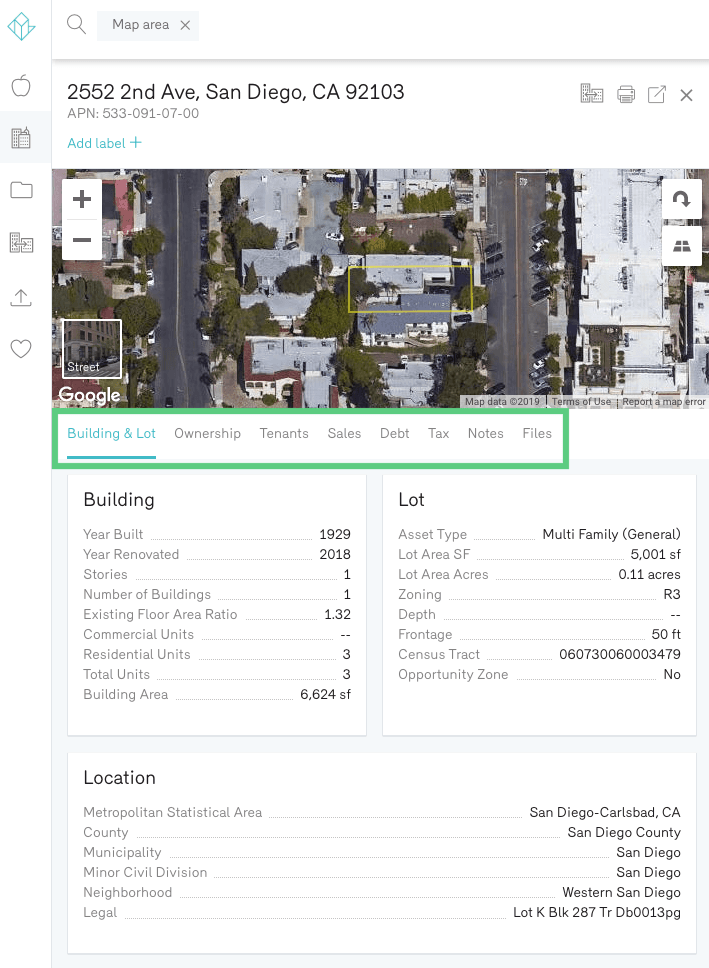
In each of these sections is a bevy of information describing the physical layout and size of the property, its use, transactional history, ownership, and so on. As you might imagine, the reported name (and contact information) of the owner can be found underneath the Ownership tab.
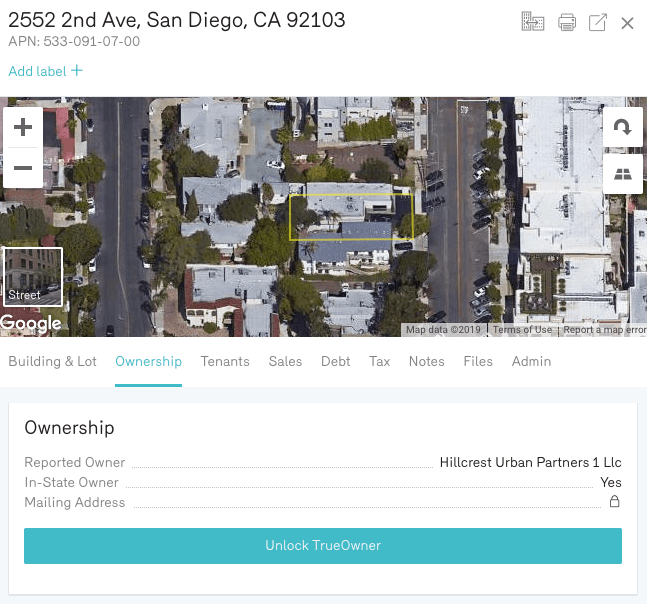
In that tab, you’ll see the reported owner (LLC, individual, or any other entity) and whether or not that owner is in the same state as the asset. Owner names and contact information remain locked until you choose to click the “Unlock TrueOwner” button and use an unlock credit (more on that below).
To prospect brand new opportunities and discover owners from scratch, you can run a property search in Reonomy based on an array of different physical and transactional qualifications. For example, maybe you don’t know the exact address of a property, or simply want to run a general search to find targeted property owners in California. Whatever the case may be, you can search multi family and commercial assets in any U.S. market based on the following (and more):
Asset Location – State, City, MSA, County, Zip Code, Neighborhood, Street Name.
Asset Type/Use – Multi-Family, Office, Retail, Office, Industrial, Land, Mixed-Use.
Building & Lot Size/Age – Building square footage, number of units, year built.
Sales History – Most recent sale date and price, multi-parcel sales.
Debt History – Most recent mortgage amount, origination and maturity dates, most recent lender, current stage of pre-foreclosure (if any).
Tenants – Tenant type, tenant name, tenant web address.
Ownership – Owner mailing address, in-state owners, owner-occupiers.
Tax History – Most recent tax amount, most recent year-over-year tax change.
Upon completing a property search, you’ll generate a list of results that match all of your applied filters. You can either dig into each property individually and access contact information as shown above, or you can export the contact information for all of those assets in bulk, which we’ll discuss later in this article.
Pierce the LLC & get contact info with Reonomy
By simply clicking the “Unlock TrueOwner” button in an asset’s Ownership tab, you’ll be given the names of all individuals associated with ownership. That might be a single outright owner, or a group of individuals tied to an LLC.
Names of decision-makers and LLC Owners
For an individual owner, you’ll usually see a matching name for the reported owner and that of the lead contact in Reonomy:
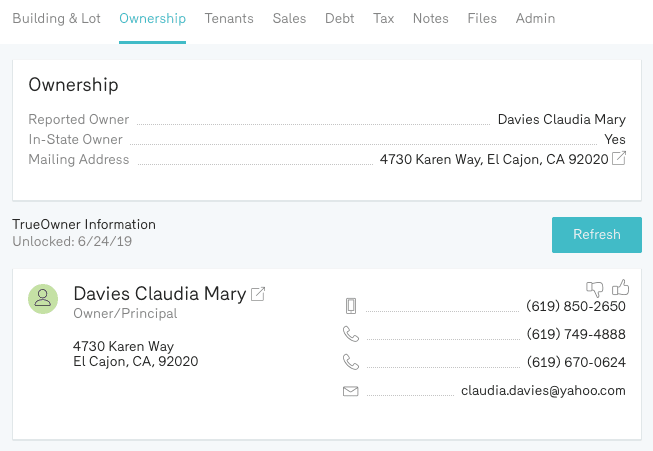
For LLC owners, you’ll see all associated contacts, with the lead contact highlighted at the top of the list, as seen below:
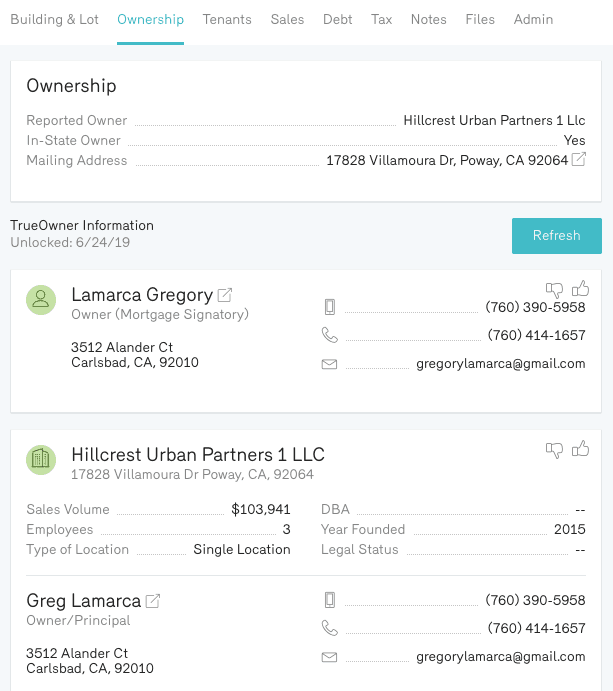
The role of each LLC member is listed on the contact card as well so that you can see if they are a likely decision-maker on the property.
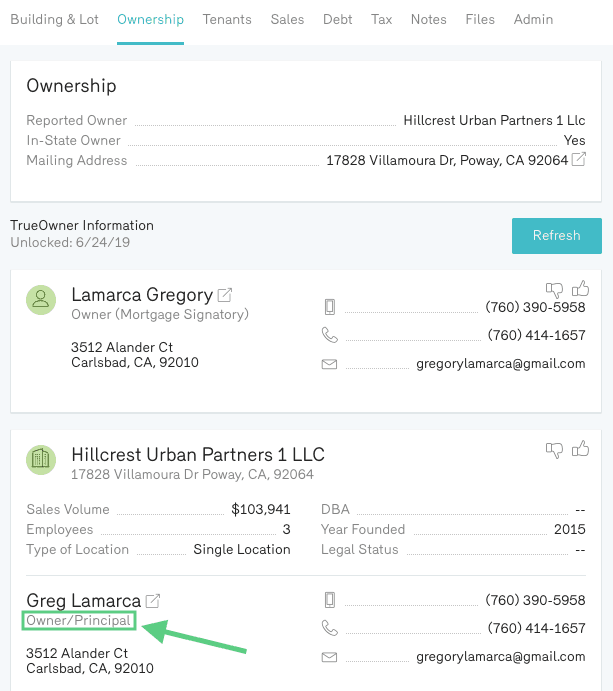
You’ll also notice the green circle icons next to both the individual and LLC names in the screenshot above. Reonomy uses green and grey icons to signify the most trustworthy ownership details and contacts associated with the property. In some cases, for example, you may be presented with a lengthy list of LLC members. These icons help you decipher who you should contact first:
Green icons represent the most trusted ownership details associated with the property. Often times, contacts with a green icon will be the ones most directly involved with the property—these are likely the most useful contacts.
Grey icons represent good additional sources of owner contact information that you can use to further analyze ownership portfolios (with a quick owner search) , or if you’re unable to get in touch with the primary decision-makers. You can also see ownership structure, such as a holding company that owns the LLC behind a property. These contacts are nested, so that you can see the flow of ownership, and who to contact at each level.

Phone numbers, email, & mailing addresses
After unlocking the TrueOwner information, you’ll be able to see the mailing address of the LLC in the top section of the Ownership tab.

In the detailed card, where available, you’ll also see the phone number(s), email, and mailing address of each individual owner associated with the LLC.
Office phone lines, cell numbers, and email addresses reside on the right side of each card (highlighted below). Mailing addresses of individuals appear on the left side, underneath the name of the owner.
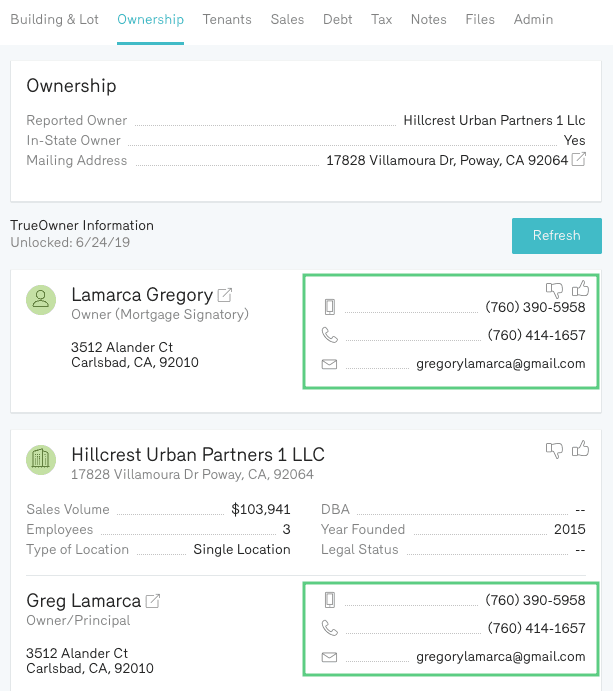
Thumbs-up and thumbs-down icons allow Reonomy users to report the legitimacy of owner contact information for that particular contact.
Finding a commercial owner’s phone number with Reonomy
Nowadays, one of the best ways to connect with a property owner is to reach them directly by phone. Yet, so many people have turned away from landlines (thanks, robo-callers!) in favor of using their cell phones exclusively. Whether you’re looking for a property owner’s landline or cell phone number, Reonomy is a valuable resource. Say you’re a real estate investor driving down the street.
You pass a shuttered grocery store and think to yourself, “wow, this could be an incredible redevelopment opportunity.” You’d love to connect with the owner, but don’t know where to begin.
As a first step, you could look up that property by address in Reonomy, as shown below.
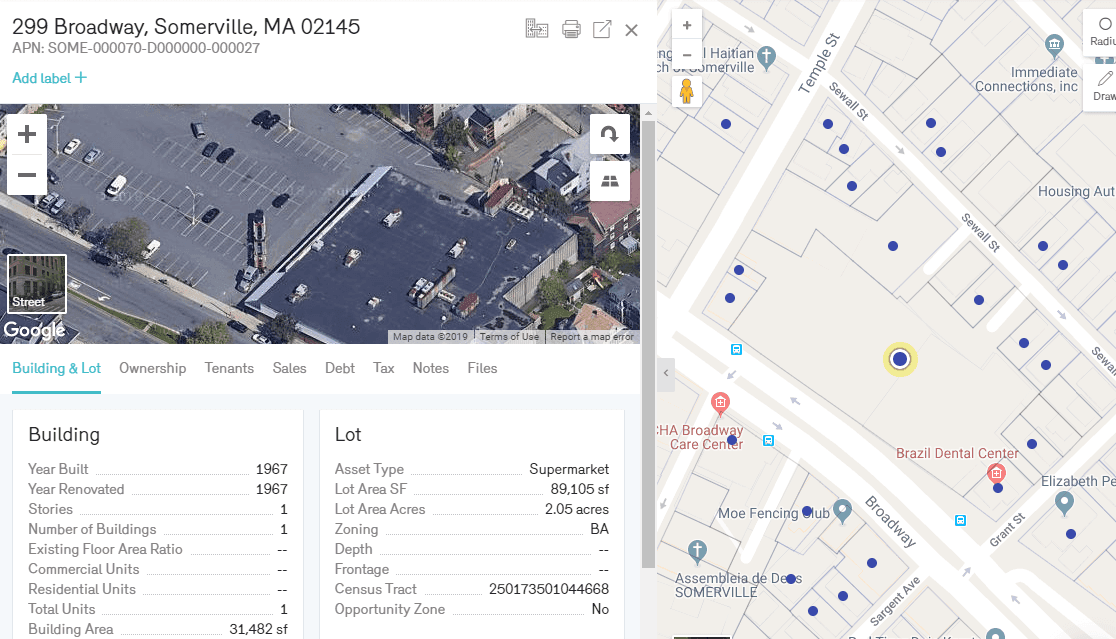
Now, again, on that page, if you click the “Ownership” tab and unlock the owner’s contact information, you can find precisely what you’re looking for:
Who owns the property. and;
In this case, two phone numbers associated with that owner
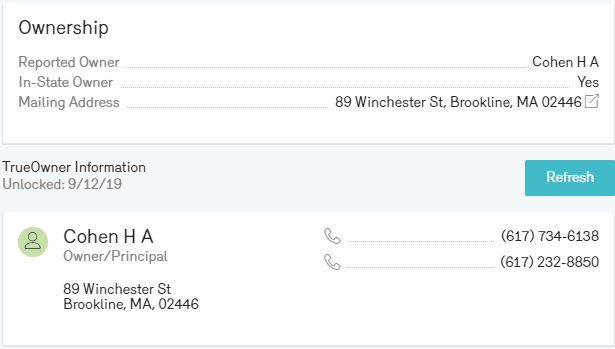
Conversely, let’s say you’ve searched for a property and now know the owner’s mailing address. Now you’re interested in learning if that owner owns anything else, and if so, where those properties are located. Because properties are often held in different names, or under different LLCs, in this case, we’re going to search for information based on the owner’s mailing address, as shown below.
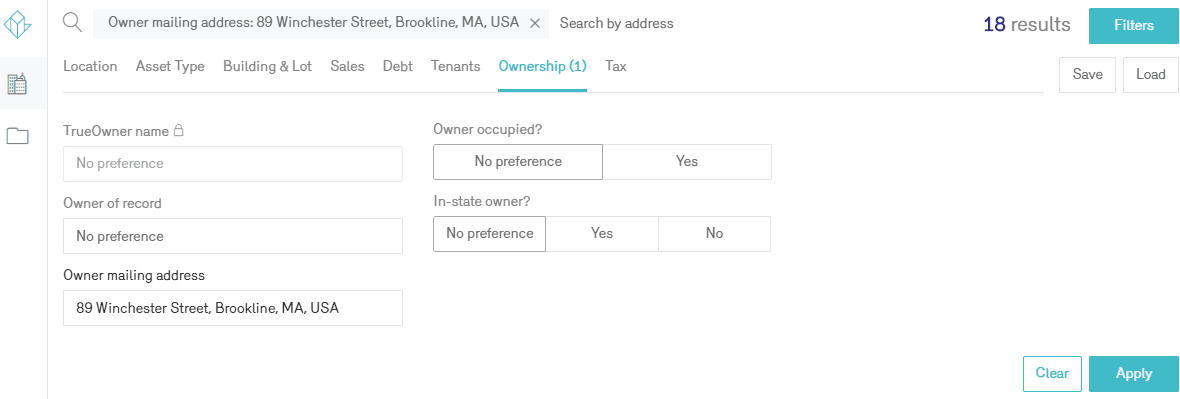
You can also click the mailing address within any property Ownership card, to see all other properties attached to that same mailing address.
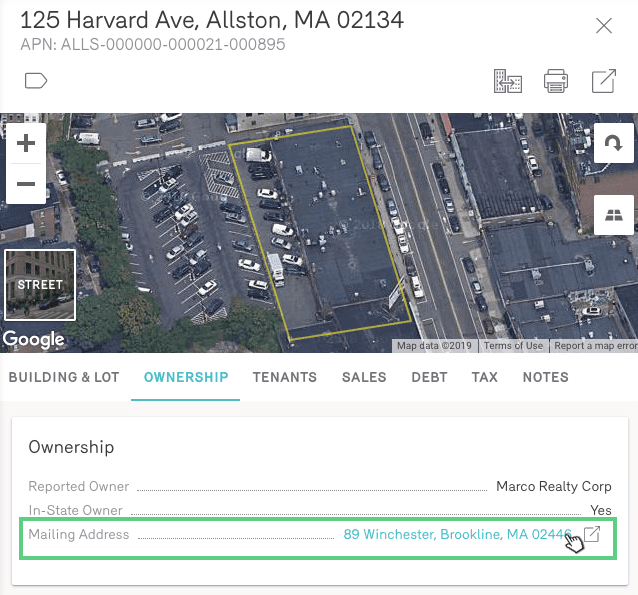
In either case, we can see that this owner actually has several holdings in the Greater Boston area.
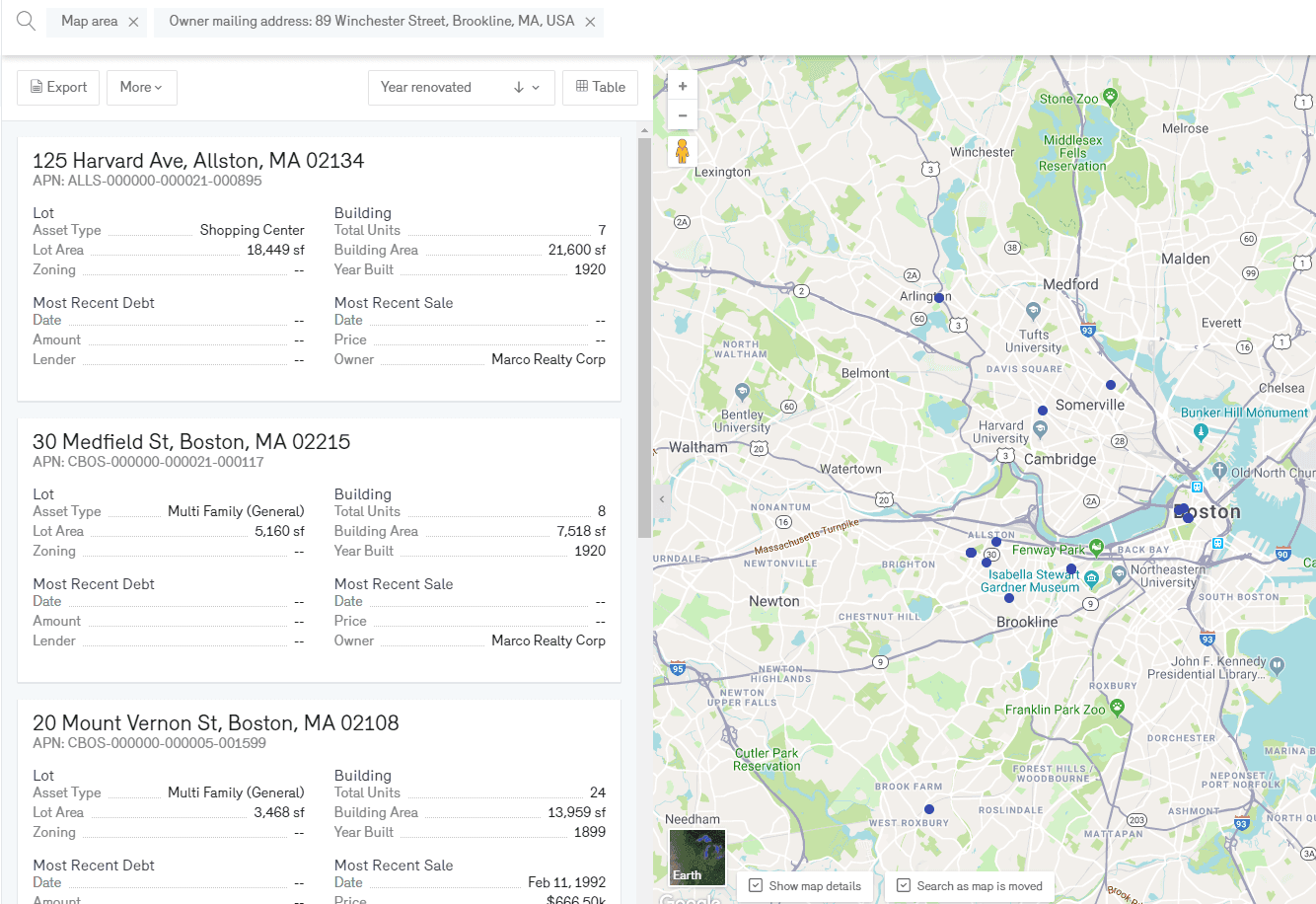
We can look at the ownership information for each of the property cards to determine if anyone else has an ownership stake in these properties, and if so, track down their phone numbers. In this case, we’ve selected one of the properties under that owner’s name and see that there are actually several others who are part of the corporation that owns this property/portfolio. We can see the landline, cell phone numbers and email addresses for each of these people.
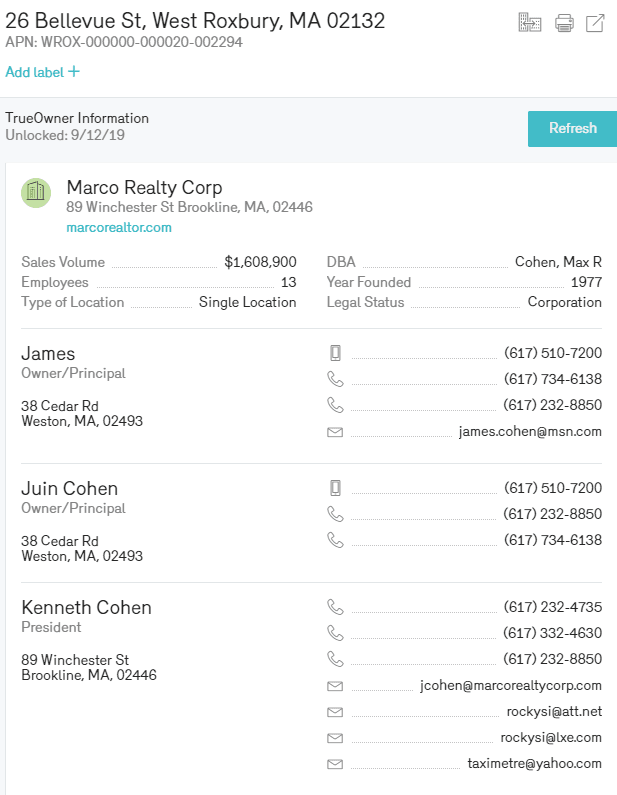
This is a particularly valuable way to find property owners’ phone numbers. That’s because if an owner doesn’t answer a call, you can still contact an associate of their’s from another property, as a way of beginning the conversation you want to have with them. It’s just an additional avenue to getting in touch with a prospect.
Another way you can use Reonomy to search for property owners’ phone numbers is by searching for properties within a specific asset class in a certain geography, as mentioned above. Let’s say, multifamily properties located in Dallas, Texas.
Say you’re a contractor looking to generate new business leads. Maybe you refine your search to filter for properties that were sold within the past year, as this may be an indication that the owner is interested in doing some work to their investment property.
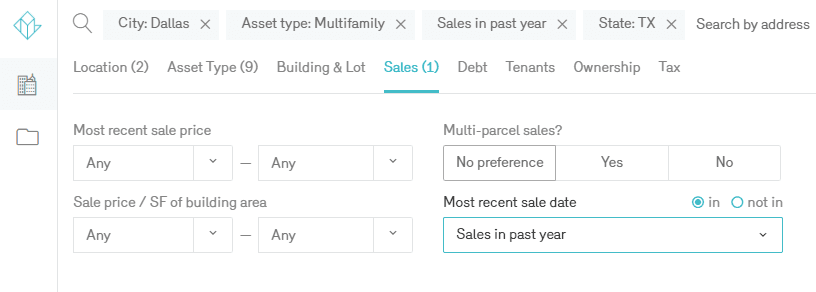
Now you have a list of all of the multifamily properties in Dallas sold within the past year.
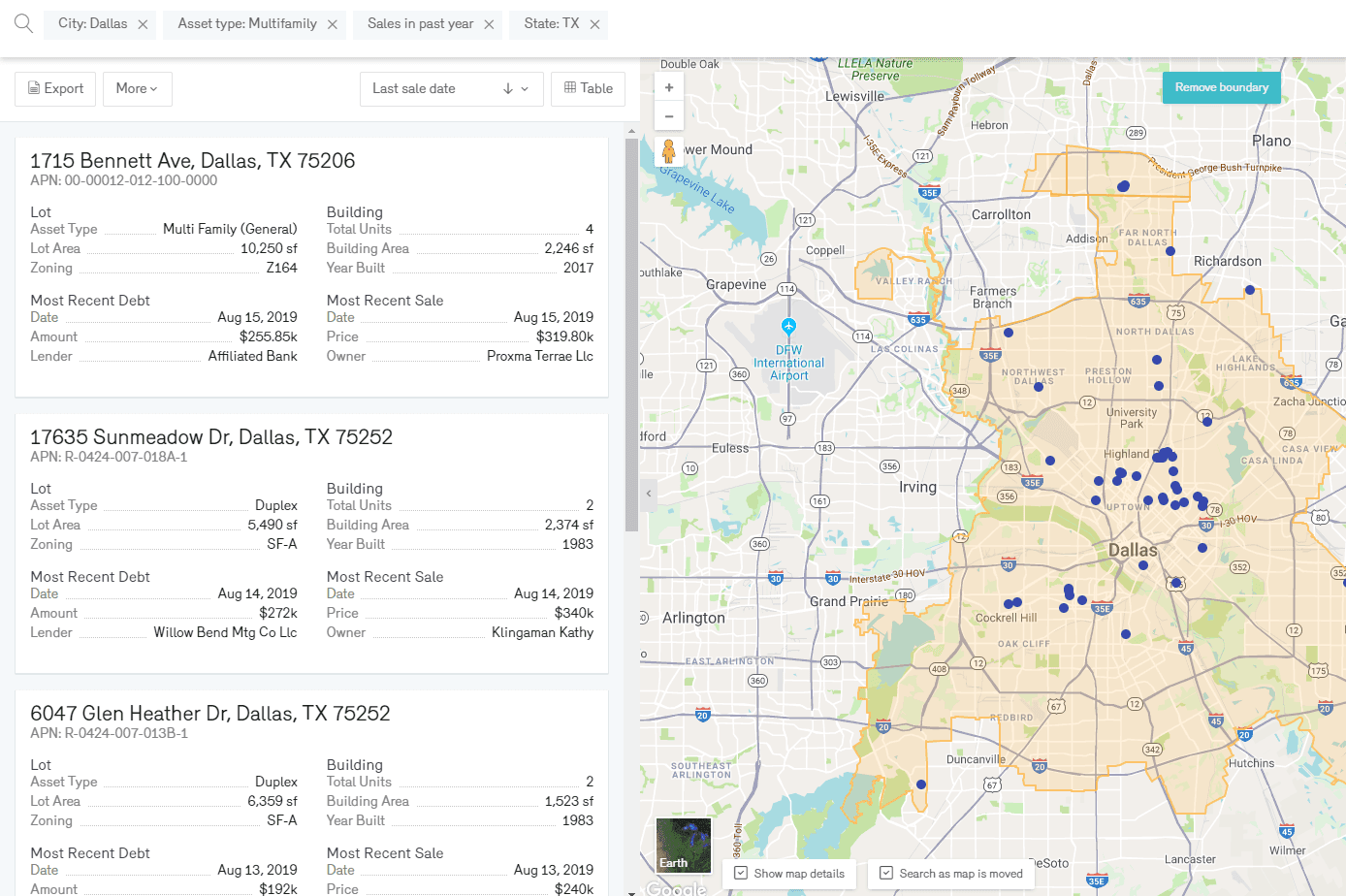
As a next step, you can click through each of the searches to identify the contact information for the new property owners, or grab a list of phone numbers in bulk.
Unlocking contact information in bulk
In some cases, you may want to gather contact information on many property owners at the same time.
For example, let’s say you wanted to run a targeted direct mail campaign in Phoenix to owners of multi family properties of at least 10 units. After adding a few filters, you’re left with more than 2,000 prospect properties.
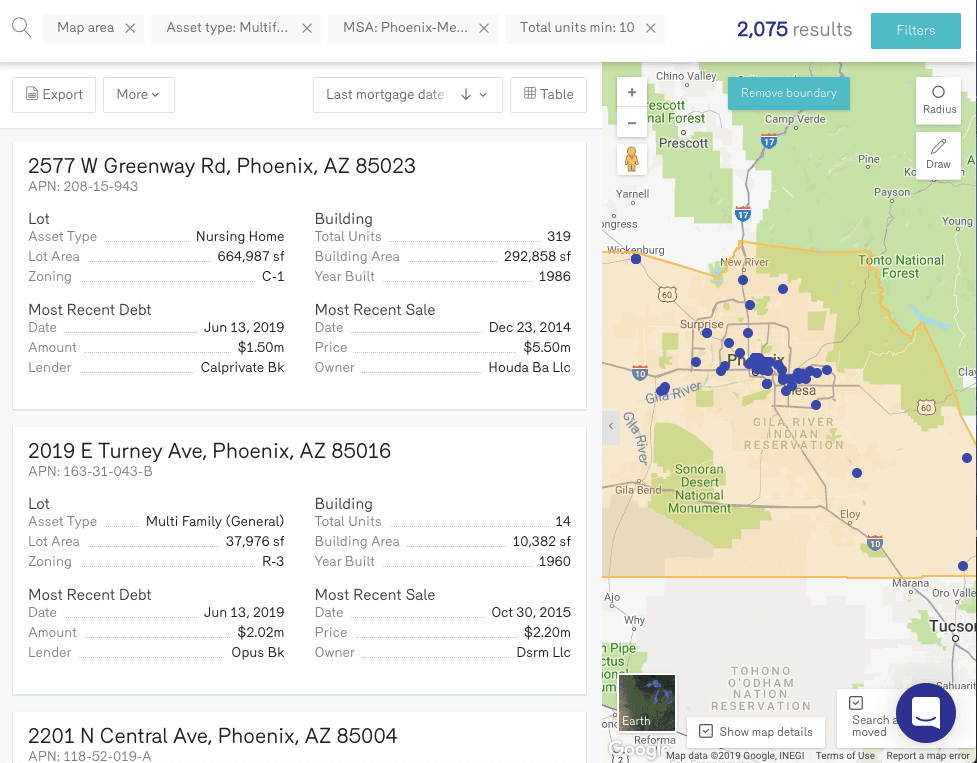
Instead of having to go through each property to unlock the owner contact details, you can simply unlock all contact information in one fell swoop.
Once you have conducted your search, you can click the “More” button that resides at the top of your list of results, where you’ll see the option to “Unlock TrueOwners.”
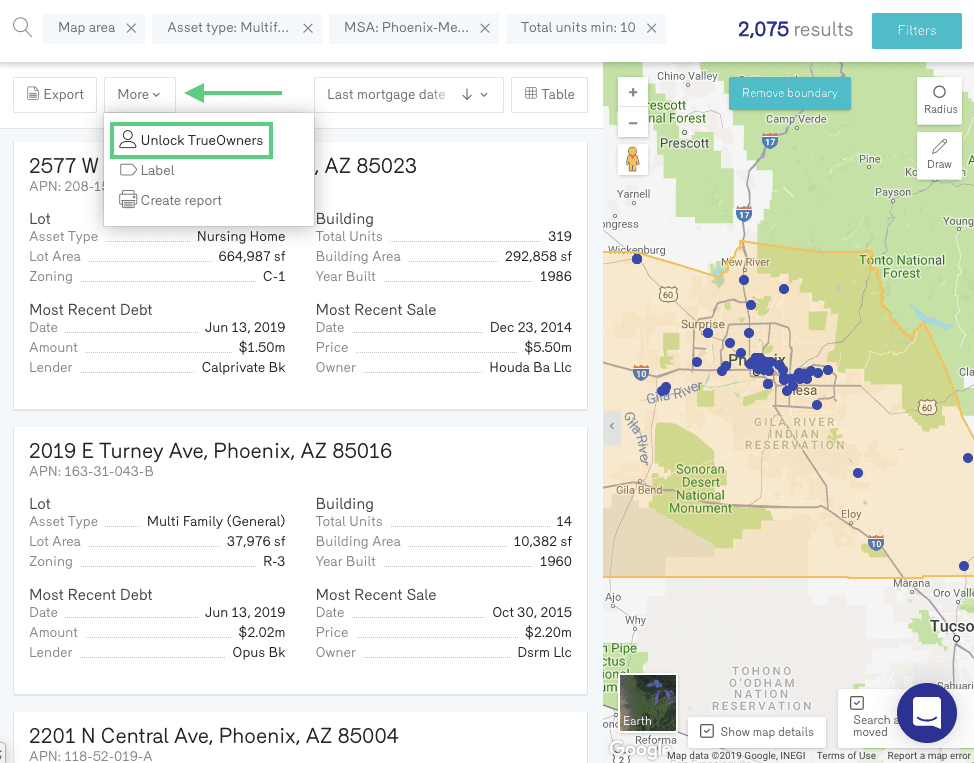
By clicking this, you’ll have the option to decide how many properties from your list you’d like to unlock contact information on, with the ability to pull as many as 250 contacts at once.
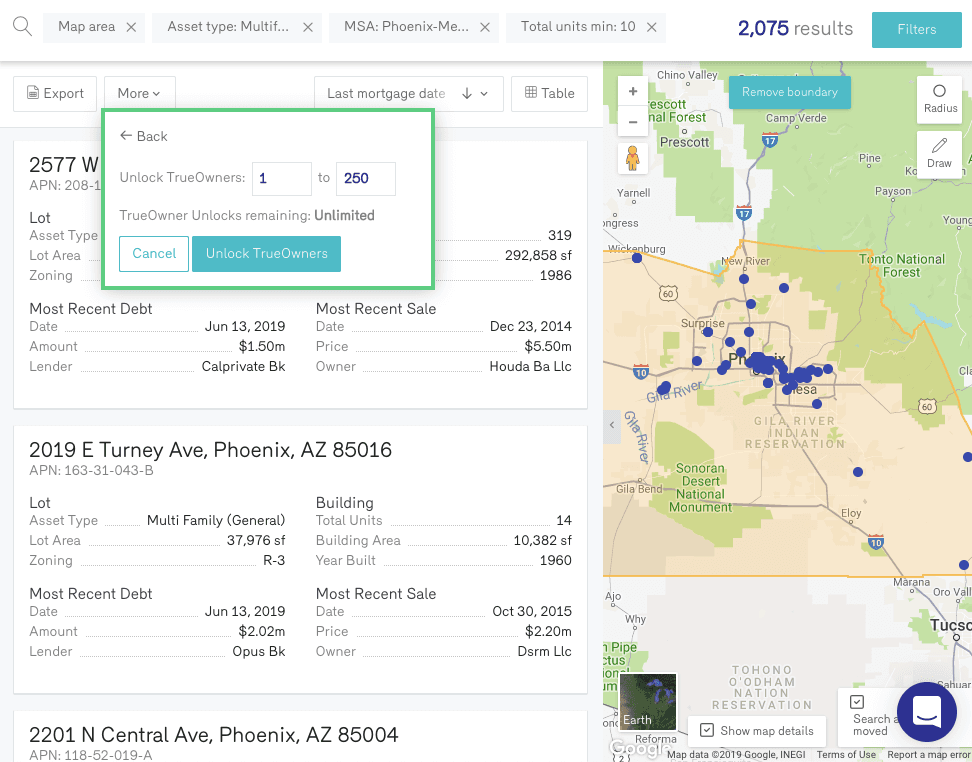
Once you type in the number of properties, you’d like to gather contact information for and click “Unlock TrueOwners,” Reonomy will automatically unlock the contact information for those properties.
Exporting a list of property owner contact information
Also, from your list of results, you can export full lists of property information, including full ownership contact information. To export property information plus contact information in bulk, click the Export button on the property search page.
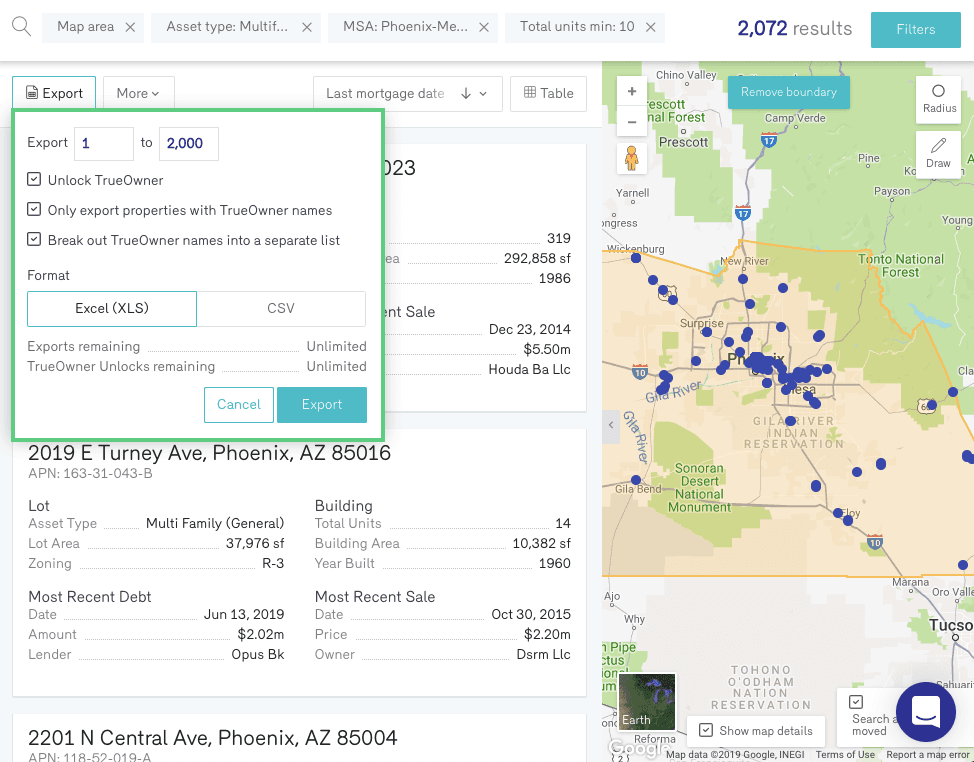
In the dropdown, you’ll be able to select/deselect three options.
The first option is to unlock the contact information of all property owners in your export, outright.
The second option allows you to only export properties from your list that have the names of property owners available for them.
The last option allows you to break out the contact information from your list of property owners into a separate list.
From there, you can select the number of properties you’d like to export, along with the selections mentioned above. These lists can be exported in either an XLS or CSV file format. In the end, the process only takes a few quick steps—from your initial discovery of the right, targeted property owners, all the way through reaching them directly on the phone. The Reonomy platform can do the heavy-lifting for you, so all that remains is for you to pick up the phone, reach out, and start winning new business immediately.
Using public records and other sources
Why is contact information so difficult to access otherwise? Well, with public property owner records and other free or low-cost options, the data simply isn’t going to be reliable or up-to-date. Getting contact information for anything close to free is likely going to result in more issues than it could potentially solve, creating the need for you to double, triple, and cross-check sources to make sure you’re not wasting too much time.
Reonomy is powered by these same public sources (across the entire country), but is also bolstered by a bevy of private sources and proprietary algorithms that bring contact information together in a way that’s never been done before.
Author

Reonomy
Resources team
Author

Reonomy
Resources team




